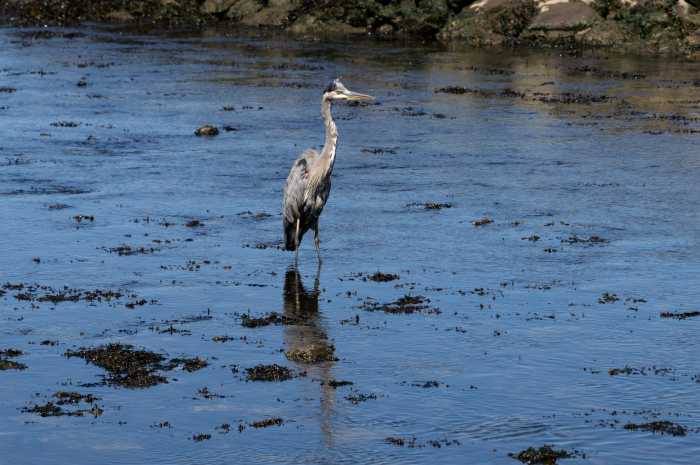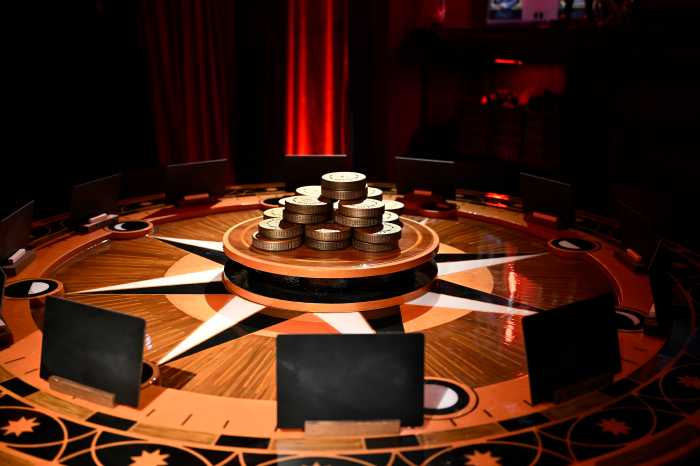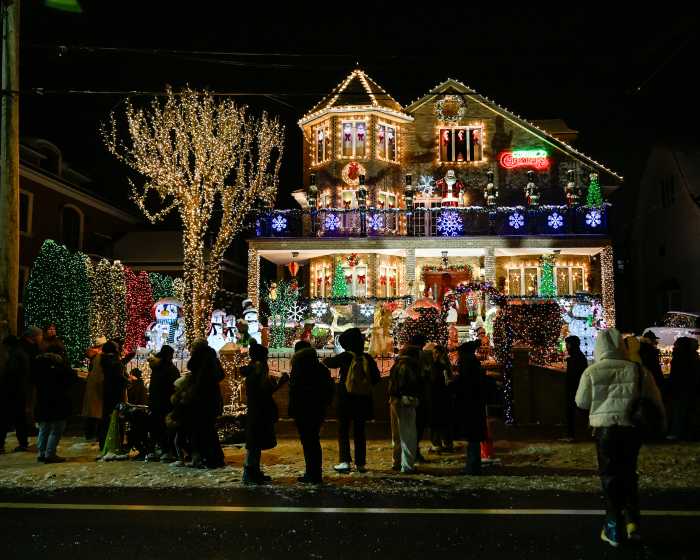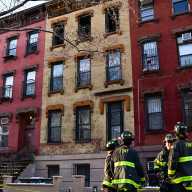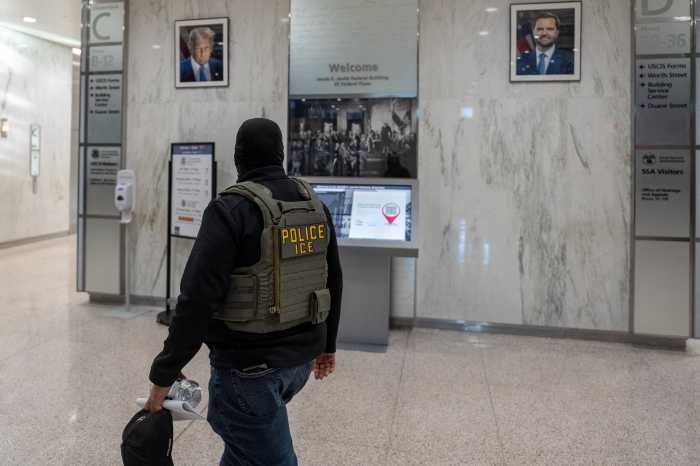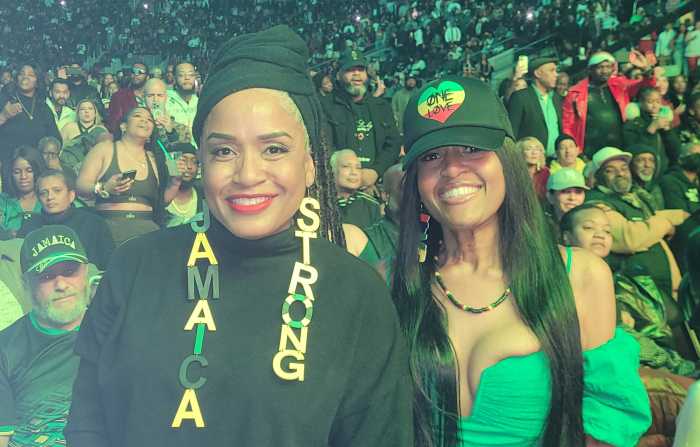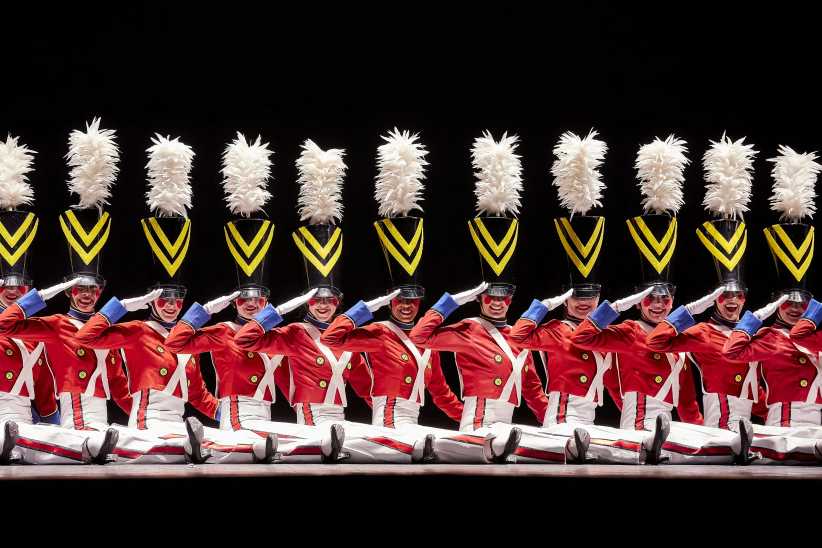With a nod to the commotion caused at the
Brooklyn Museum of Art by the "Sensation" exhibit two
years ago, the museum has recently unveiled "Exposed: The
Victorian Nude," rewinding British art history and its attendant
controversies back to the Victorian era.
The latest exhibit is a series of works depicting nudes created
between 1837 and 1901. In the accompanying text, art historians
recall the difficulties of creating these works, especially if
an artist wanted to work with, or learn how to draw, a living,
nude model, and attempts at censoring some of the artists.
The Brooklyn Museum of Art is the only North American venue for
the exhibit, organized by the Tate Britain. It includes 150 works
ranging from enormous paintings to small sculptures to photography
and even a film of a Victorian woman’s burlesque act.
But in a nudge-nudge, wink-wink fashion, the last room of the
show – dark with shadows and black gauzy drapes – houses racy
films and photographs that are stark, amateurish documentation
of young naked women, men and children.
As someone who’s accustomed to viewing artwork hanging in a sterile
unadorned room or in an artist studio, finding myself with strangers
in a darkened room looking at photographs of nude women and children
was a bit unsettling.
Still, there is a lot to be discovered in this show: this is
the era when the word ’pornography’ entered the lexicon, and
a distinction was made between good nudity and bad nudity. The
viewer comes to appreciate the difficulties and stigmas attached
to a painter who created these works of art, so it seems that
the titillating title and shadowy backroom (shunted away like
the adult film section of a video store), designed by Matthew
Yokobosky, are just more of the museum’s unnecessary hucksterism.
The majority of the artwork is surprisingly, gloriously colorful
and vivacious, many on a grand scale, and as the curators were
aware, it does occur to the viewer that the subject matter is
surprisingly prevalent in art during an era that is associated
with so much modesty and restraint. The works speak for themselves,
and the exhibit’s title – and drapery – might keep the less adventurous
away from some wonderful compositions.
There’s Edward John Poynter’s "Andromeda," a nude woman
chained to a cliff, her head turned to the side. Her turquoise
wrap is caught by the wind and roils around her, echoed by the
beating of the waves on the rocks. It’s a harmonious blend of
colors and shapes and even subject matter – pitting the defenseless
human against nature’s powerful forces.
Dante Gabriel Rossetti’s "Venus Verticordia" is a woman’s
nude torso nestled among a riot of roses and other carefully
painted flowers. She’s ringed with a halo, and butterflies alight
in her hair and on her arrow. It’s a meditation on beauty, and
even dangerous beauty, as the sharp point on her arrow suggests.
Other paintings are even more glorious: Herbert Draper’s "The
Lament for Icarus" captures the fallen, shapely mythic character
lying on a bed of his spectacular outstretched wings. The sun
sets behind him (what light!), and his lifeless body is surrounded
by delicate, nude sea nymphs. Arthur Hacker’s "The Cloud"
depicts a nude woman reclining on a cloud and surrounded by other
less defined figures in and among the clouds. It seems as if
Hacker snatched the white tufts – illuminated by sunlight – right
from the blue sky and employed them in this painting. It is so
ethereal it doesn’t seem as though it could come from paint and
a brush. It, too, is a masterpiece, yet there are many more.
As far as the backroom, whether or not it is pornography – or
whether or not it inspires lascivious thoughts – is really in
the eye of the beholder (at least according to "Alice in
Wonderland" author Lewis Carroll, whose writings and photographs
of nude children are on display there).
Carroll’s hand-colored photograph, "Evelyn Hatch reclining,"
is a child lying nude on the floor with her hands behind her
head, her eyes looking directly, maturely at the viewer. (These
photographs were not kept by Carroll but made for and given to
the girls’ families.) Carroll wrote, "[T]he real distinction
between sin and innocence, in pictures is whether it stimulates
sinful feelings, or not. The case of the agent, and of the receiver,
must be kept distinct."
I felt that his portrait of Hatch was a far cry from the typical
family shot of a naked infant getting a bath in the kitchen sink.
Comparatively, Annie Swynnerton’s "New Risen Hope,"
an impressionistic painting of a toddler’s torso, could more
easily be taken for jubilant innocence, but given the recent
stories of murdered children like Jon Benet-Ramsey and the pervasive
photographs of her in makeup and mature clothing, seeing Hope’s
red mouth parted, head reared back and eyes turned askance, the
painting, sadly, does not carry the same unrestrained happiness
it may have evoked in 1904. It makes this 21st-century viewer
feel unsettled.
Looking at a batch of art from another time can’t help but lead
one to make comparisons to the present. It seems that while on
one hand we are more protective of our children’s photos – especially
on the Internet – many of the same stigmas and prejudices regarding
adult nudity are still with us today. While some of the Victorian
sensibilities seem prudish, clamping down on a person’s right
to free speech and free expression is still commonplace today
and is something American artists continue to guard against.
The show explains that John Everett Millais was compelled to
cut out the head and torso of his female nude figure, who was
turned toward her rescuer, in "The Knight Errant" because
of predominantly poor reviews. He then painted-in the woman’s
head, modestly looking away from her knight in shining armor.
The exhibit is dense with research and with art that will make
you catch your breath and others that will make you shake your
head at the silliness. It may be more than a century old, but
it succeeds in putting today’s artwork in a fresh context and
gives viewers a new perspective.
Don’t miss the Brooklyn Museum’s latest sensation.
"Exposed: The Victorian Nude"
will be on view at the Brooklyn Museum of Art (200 Eastern Parkway)
through Jan. 5. Admission is $6 adults, $3 students and seniors.
An audio tour from Acoustiguide is available for $5, $4 members.
An illustrated catalogue of the same title, edited by Alison
Smith and containing contributions by the curators and others,
is available for $45 (hardcover) and $35 (soft cover). For more
information, visit www.brooklynmuseum.org
on the Web or call (718) 638-5000.



